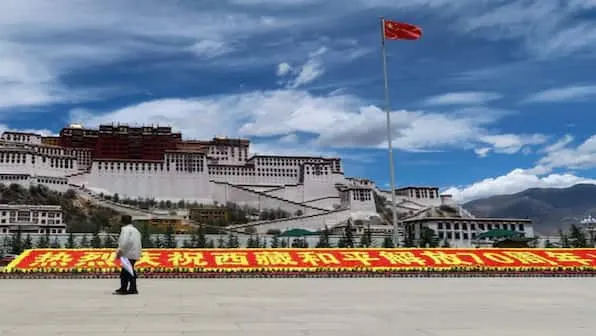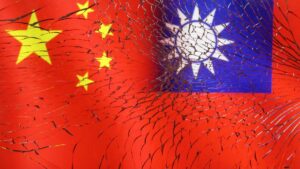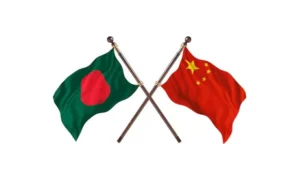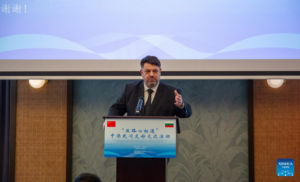China’s Web of Influence by manipulation in South Asia for Geopolitical Gain
In recent years, China has aggressively expanded its presence and influence across South Asia, employing a multifaceted strategy that combines economic coercion, propaganda, and political meddling. While Beijing frames its engagement through initiatives like the Belt and Road Initiative (BRI) as mutually beneficial cooperation, a closer examination reveals a pattern of manipulation aimed at advancing China’s geopolitical ambitions at the expense of regional stability and the sovereignty of smaller nations. At the heart of China’s strategy is the cultivation of economic dependence. Through massive infrastructure investments, trade imbalances, and strategic lending, Beijing has created a web of financial obligations that it can leverage for political gain. The China-Pakistan Economic Corridor (CPEC), with its $60 billion price tag, exemplifies this approach. While promising development, it has saddled Pakistan with unsustainable debt and raised concerns about long-term sovereignty.
Similar patterns are evident across the region. In Sri Lanka, Chinese-financed projects like the Hambantota Port have resulted in debt-for-equity swaps, effectively handing control of strategic assets to Beijing. Bangladesh, despite its growing economy, faces a stark trade imbalance with China, importing $15 billion while exporting a mere $85.7 million in 2022. This asymmetry provides China with significant economic leverage. By creating financial dependencies, China can exert pressure on governments to align with its interests, even when they may conflict with domestic priorities or regional stability.
China’s geopolitical maneuvering in South Asia has taken a new turn with its proposal to extend the China-Myanmar Economic Corridor (CMEC) to Sri Lanka. This ambitious plan, which would link Sri Lanka’s Hambantota port to Myanmar’s Kyaukphyu port, exemplifies Beijing’s strategy of using infrastructure projects to reshape regional dynamics in its favor. The Sri Lankan Ministry of Foreign Affairs, while assessing the proposal, has acknowledged the strategic benefits it would provide to China. Notably, this new route would offer an alternative path for China’s energy shipments from the Gulf to Kunming province, bypassing the strategically vulnerable Malacca Straits.
However, the Ministry’s observation that “due consideration must be given to the regional security balance” highlights the complex geopolitical implications of such projects. By linking these ports, China could potentially enhance its military presence in the region, raising concerns among neighboring countries, particularly India. The urgency of this expansion was made clear during Chinese State Councilor Shen Yiqin’s visit to Sri Lanka in November 2023, where she conveyed China’s prioritization of extending the CMEC to Sri Lanka. This high-level diplomatic push demonstrates Beijing’s determination to rapidly advance its strategic interests in the region.
In parallel with these infrastructure initiatives, China is also ramping up its efforts to control narratives and shape public opinion in South Asian countries. A recent memorandum of understanding between the China Media Group (CMG) and Pakistan Television Corporation (PTC) illustrates this strategy. The agreement includes the joint production of an Urdu news bulletin called ‘China Express’ and collaborative coverage of China-Pakistan Economic Corridor (CPEC) projects. This media collaboration is a clear attempt to build a positive narrative around Chinese investments and promote a favorable image of China in Pakistan. By leveraging state-owned media outlets, Beijing aims to influence public perception and potentially mute criticism of its activities in the region.
The CMG, known as the ‘Voice of China’, has also extended its reach to Nepal, with a recent delegation visiting to promote engagement with Nepal Television. This expansion of Chinese media influence across multiple South Asian countries reveals a coordinated effort to shape regional discourse in China’s favor. These developments – from infrastructure projects to media collaborations – demonstrate China’s multifaceted approach to expanding its influence in South Asia. While presented as economic cooperation and cultural exchange, these initiatives serve Beijing’s broader geopolitical ambitions, often at the expense of regional stability and the sovereignty of smaller nations.
Beyond economic tools, China has invested heavily in shaping public opinion and controlling narratives in South Asian countries. The recent memorandum of understanding between the China Media Group and Pakistan Television Corporation is a prime example. Under the guise of cultural exchange, this agreement aims to produce content that promotes a positive image of China and the controversial CPEC project. China’s propaganda efforts extend into academia and civil society. The establishment of Confucius Institutes, generous scholarships for South Asian students, and cultivation of pro-China voices in think tanks and universities all serve to create a more favorable intellectual environment for Beijing’s activities. In Nepal, for instance, China has subsidized Mandarin teachers and pushed for the language to become compulsory in some schools, a clear attempt to expand its cultural influence.
These efforts, described by some analysts as manifestations of China’s “sharp power,” go beyond traditional soft power approaches. They seek not just to attract but to manipulate and coerce, often undermining democratic institutions and independent media in the process. While economic projects are ostensibly civilian in nature, many raise significant strategic concerns. The development of ports like Gwadar in Pakistan and Hambantota in Sri Lanka has long worried regional security experts, who see them as potential dual-use facilities that could one day host Chinese naval assets. The extension of the China-Myanmar Economic Corridor to Sri Lanka, potentially linking Hambantota to Myanmar’s Kyaukphyu port, further illustrates how infrastructure projects serve broader strategic goals. These developments must be viewed in the context of China’s wider military ambitions and its tensions with India, the traditional regional power in South Asia. By establishing a network of friendly ports and infrastructure, China is effectively encircling India and positioning itself to project power across the Indian Ocean.
Defenders of China’s engagement often point to the tangible infrastructure developments it has brought to the region. Roads, railways, and ports have indeed been built, potentially contributing to economic growth. However, the terms of these projects and their long-term implications paint a more complex picture. Many BRI projects have been plagued by corruption, delays, and environmental concerns. The Gwadar port in Pakistan, touted as a game-changer, remains largely inactive. More critically, the debt burdens associated with these projects have pushed countries like Pakistan and Sri Lanka to the brink of economic crisis, necessitating bailouts and debt restructuring. China’s approach to these crises has been telling. While it has provided emergency loans and debt relief in some cases, it rarely forgives debt outright. Instead, Beijing’s bailouts often seem designed more to protect its own banks and maintain its influence than to provide genuine assistance to struggling partners.
As China marks a decade since the announcement of the Belt and Road Initiative, it’s clear that its engagement with South Asia has evolved far beyond simple economic cooperation. Through a combination of financial leverage, propaganda, and strategic infrastructure development, Beijing has woven a complex web of influence across the region. While China presents itself as a benevolent partner in South Asia’s development, the reality is far more nuanced and potentially dangerous. The economic dependencies, political interference, and strategic implications of China’s actions pose serious challenges to the sovereignty and stability of South Asian nations. As the region grapples with these challenges, it’s crucial for South Asian countries to approach Chinese engagement with caution and skepticism. Balancing the potential benefits of Chinese investment against the long-term costs to independence and regional stability will be a key challenge for policymakers in the years to come. Moreover, the international community, including India and Western powers, must offer viable alternatives that support sustainable development without the strings attached to China’s manipulative brand of engagement.













